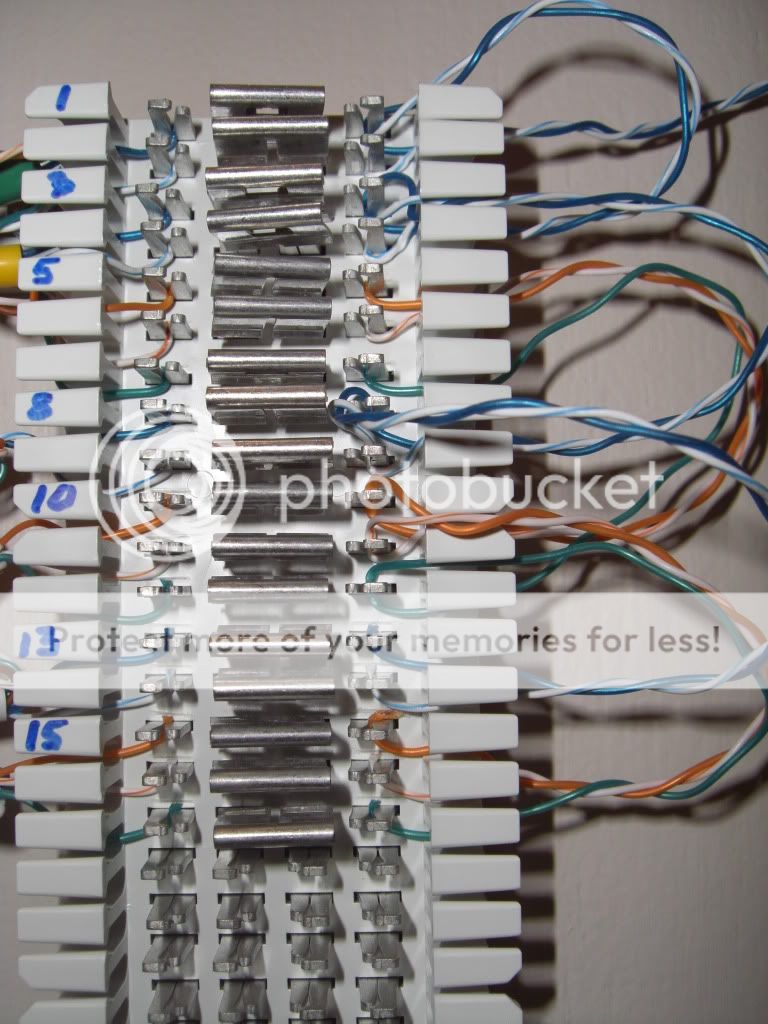AceCannon
Active Member
Acecannon. Did you land all the auxes on the 66 block as well and did you then connect them on the 'wiring room' or 'field' side of the 66 block?
My thoughts are that I have a few 4 and 5 ways and the distro modules provide nice convenient ways to conenct up to 3 auxes to a dimmer whereas i think this may get messy with a 66 block.
The switches and their aux connections (if needed) land on the left (field) side. I made connections to the ALC bus AND the aux's on the right. For multiple aux's, I just used 3 conductors twisted together, ran them through each set of punchdown's for each switch using the "non-cutting" end of the punchdown tool. This way, each aux can be removed from the equation at any time for trouble shooting. Just remove bridging clips.


